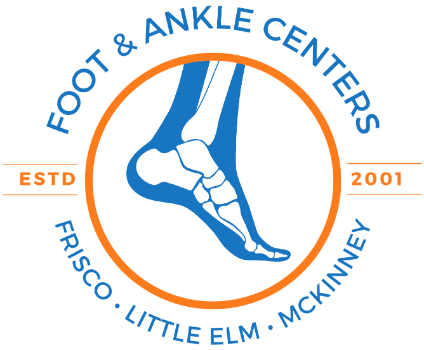Wart that won’t go away? We’ve got real solutions at Foot and Ankle Centers
Wednesday, June 11, 2025 | By: Foot & Ankle Centers of Frisco and Plano
Have you been struggling with a stubborn wart that just won’t seem to go away no matter what you try? Did you know that warts are caused by viral infections and can persist if not treated properly? In this comprehensive guide, we'll explore effective solutions for treating plantar warts and provide insights into the treatments available to help you say goodbye to these pesky blemishes for good. From liquid nitrogen to topical acids and advanced laser techniques, you’ll gain a better understanding of your options, why some treatments are more effective than others, and how to achieve lasting results. Let’s dive into the world of wart treatments and uncover the best methods to reclaim smooth and healthy skin!
Understanding Plantar Warts
Plantar warts are a common foot problem, affecting people of all ages. They appear on the soles of the feet and can be both painful and unsightly. These warts are typically caused by the human papillomavirus (HPV), which often enters the body through tiny cuts or breaks in the skin. Understanding the nature of plantar warts is essential for effective treatment.
How Plantar Warts Form
The HPV virus thrives in warm, moist environments, which is why places like public showers, swimming pools, and gym locker rooms are common breeding grounds. When someone contracts HPV, the virus can cause skin cells to grow quickly, resulting in the formation of a wart. While some immune systems can clear the virus naturally over time, others may struggle, leading to persistent warts that need professional help.
Why Do Some Warts Persist?
It’s a frustrating experience when you do everything right, from using over-the-counter treatments to applying at-home remedies, and yet the wart remains stubbornly stuck. Here’s why that might be happening:
1. The Virus is Still Active: The underlying cause of the wart, HPV, can remain active in your system. Most home remedies only address the symptoms rather than eliminating the virus entirely.
2. Improper Treatment Methods: Not all treatments work for every individual. What works for one person may be ineffective for another. The virus can be resilient, and not all topical treatments penetrate deeply enough to affect the wart's root.
3. Immune Response: Everyone’s immune system reacts differently to viruses. Some people may have a stronger response that helps clear warts faster, while others may fight the infection less effectively.
Effective Treatments for Plantar Warts
So, what should you do if you’ve been battling a plantar wart? Here are some of the most effective in-office treatments provided by healthcare professionals:
1. Liquid Nitrogen (Cryotherapy)
How It Works: Liquid nitrogen is used to freeze the wart off. The extreme cold destroys the tissue that makes up the wart, which eventually falls off as the area heals.
What to Expect: This treatment is generally quick and effective. Patients may feel a brief stinging or burning sensation during the process. After the treatment, a blister may form and eventually scab over as the wart regenerates.
2. Topical Acid Solutions
How It Works: Healthcare providers can apply stronger versions of salicylic acid or other corrosive substances directly to the wart to break it down over time.
What to Expect: This method typically requires multiple visits and consistent application. Patients often report some tenderness in the treated area, but results are encouraging with consistent treatment.
3. Pulsed Dye Laser Treatment
How It Works: This technique uses a targeted laser to destroy the blood vessels that feed the wart, ultimately causing it to die off.
What to Expect: This method is non-invasive and usually requires no anesthetic. However, multiple sessions may be needed for complete resolution.
4. Surgical Excision
How It Works: For deep or resistant warts, a minor surgical procedure can remove the wart entirely.
What to Expect: This option is often reserved for cases where other treatments have failed. Local anesthesia is used, and post-operative care is crucial to ensure proper healing and to keep the area clean.
Preventing Warts from Coming Back
After successfully treating a plantar wart, many individuals wonder how to prevent future warts. Here are some effective strategies:
- Maintain Foot Hygiene: Wash your feet regularly and dry them thoroughly, especially between the toes.
- Wear Proper Shoes: Avoid going barefoot in public places. Instead, wear sandals or flip-flops in communal areas to minimize exposure.
- Boost Your Immune System: Eating a balanced diet, exercising, and getting enough sleep can help you maintain a robust immune response to viruses.
- Avoid Picking at Warts: Picking can lead to spreading the virus to adjacent areas of your skin.
When to Seek Professional Help
If you’re experiencing persistent warts, despite home treatment attempts, it may be time to consult a healthcare professional. They can evaluate your condition, confirm the diagnosis, and help you choose the most suitable treatment options.
The Takeaway: Regain Your Confidence
Dealing with warts can be a frustrating experience, but you don’t have to suffer silently. With the range of effective treatments available, you can say goodbye to stubborn lesions and reclaim smooth, healthy skin. Remember, a healthy lifestyle and prompt medical attention can play a vital role in preventing and treating warts. Get informed and take action!


Leave a comment
0 Comments